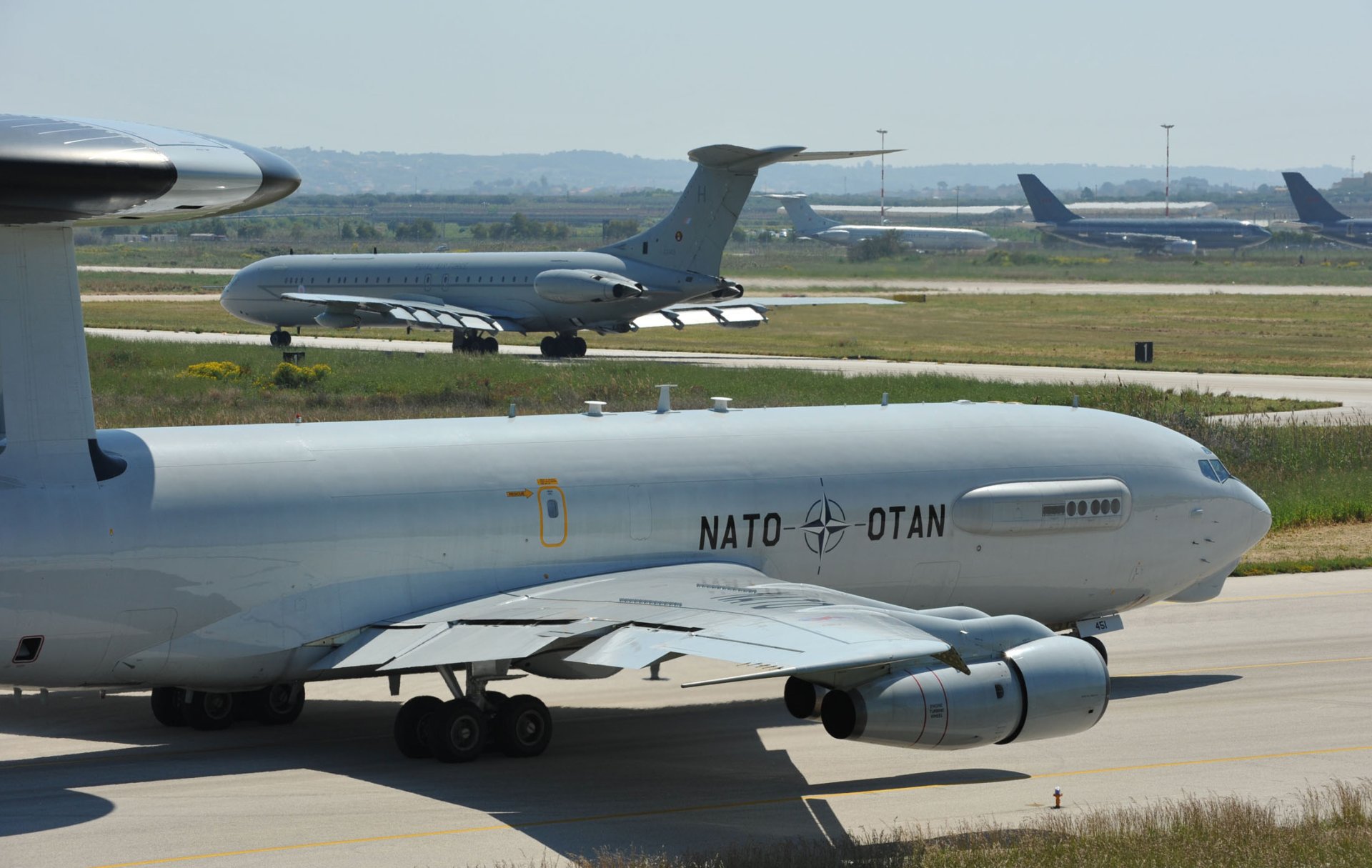NATO member states are discussing a request to use the alliance’s AWACS air surveillance aircraft in the battle against the jihadist Islamic State group, an official said Friday.
An AWACS commitment would mark a departure for NATO which up to now has had no direct role in combating IS but is increasingly concerned by the threat it poses on its southern flank.
“We can confirm there has been a request for concrete support from NATO to the anti-ISIL effort in the form of NATO AWACS surveillance planes,” a NATO official said, when asked about reports Washington had raised the issue. ISIL is an alternative name for the IS group.
“This request is under discussion by allies,” the official said, without identifying which country had submitted it.
“Any decision would be in line with the Wales summit declaration which indicates NATO’s readiness to support the bilateral efforts of allies,” the official said, referring to a 2014 meeting of alliance leaders.
US officials said Defence Secretary Ashton Carter had recently sent letters to all members in the US-led anti-IS coalition seeking additional support.
“This included a letter to NATO — of which all member countries are (also) members of the coalition — to begin the discussion on ways in which it might contribute,” one US official said.
The official declined to give details about what that might involve, saying the letters were “part of an ongoing global dialogue about how to increase our fight against IS.”
Diplomatic sources told AFP an agreement could involve NATO deploying its AWACS aircraft to the United States to free up planes Washington could then use for strikes by the anti-IS coalition.
“There would be no direct NATO role in the anti-IS coalition,” the source said, describing the discussions as “cautious.”
“There will be no NATO AWACS planes over Iraq or Syria,” the source added.
NATO has few military assets of its own, providing the umbrella command structure for the 28 allies, but in the 1980s they agreed to establish an AWACS (Airborne Warning and Control System) unit to counter the then Soviet threat.
The AWACS unit comprises more than 20 planes capable of monitoring activity, principally in the air but also on the ground, within a radius of some 400 kilometres (260 miles) to warn of threats and coordinate a response.








